Now we’re living on a warm, hospitable planet. As Carl Sagan has said “That’s home. That’s us. On it everyone you love, everyone you know, everyone you ever heard of, every human being who ever was, lived out their lives.” We, humans, are the unquestionable rulers of our little oasis in a hostile universe. But all things must pass. Life on Earth, even the planet itself, won’t last forever. What’s more, humans may go extinct before our planet (and probably before the life on it) dies out. Here are some possible (and horrible) ways how planet Earth (or, at least, life on Earth) could die.
1. Collision with a rogue planet
Timeframe: unknown
“Something wicked this way comes.”
W. Shakespeare, Macbeth, Act 4, Scene 1
What if a rogue planet enters our solar system? It would be catastrophic. It could alter the planets’ orbits (the bigger the rogue planet, the worse the danger) and drag Earth into an extreme and inhospitable orbit (too close to or too far from the Sun). It could even kick us out of the solar system.
What’s more – it could crash into Earth. And it probably happened before: about 4.5 billion years ago, 20 to 100 million years after the solar system coalesced (in the Hadean eon), a Mars-sized object named Theia collided with Earth and the Moon formed out of the debris leftover.
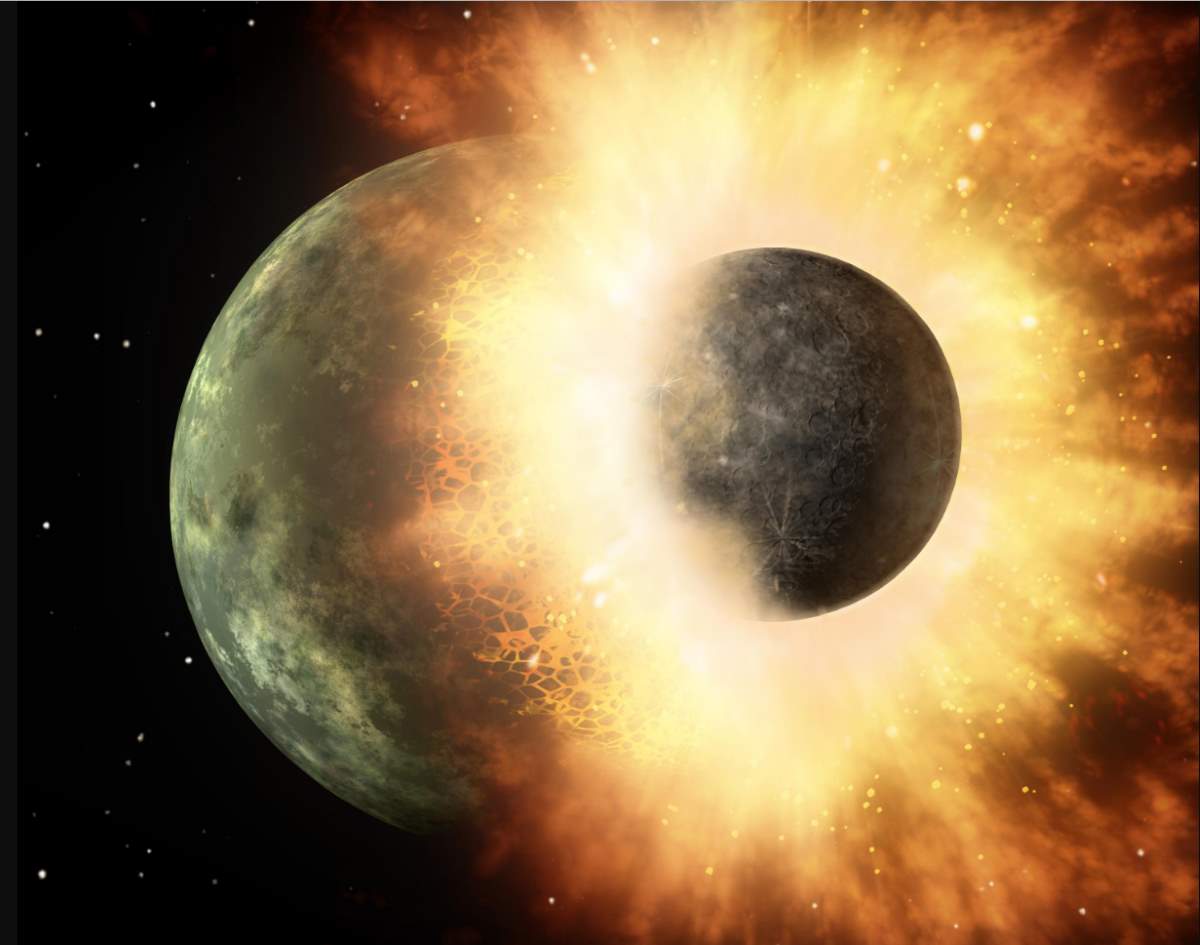
In all scenarios above, life on Earth would come to an end. Plus, the Earth itself could become a rogue planet.
But what’s a rogue planet? It is actually a planet that does not orbit a star. The researchers think there are two rogue planets for each star in the Milky Way. Ok, then – how many stars are in the Milky Way? According to NASA, “the most common answer seems to be that there are 100 billion stars in the Milky Way on the low-end and 400 billion on the high end.”
While this number is already big, according to a 2012 study, our
Update – March 10, 2019
According to a new study, published in Astronomy & Astrophysics, there could be billions of undetected rogue planets could be in the Milky Way galaxy.

2. The approach of a wandering star
Timeframe: possibly within the next million years
If a rogue planet can do that much damage, imagine what a star could do.
An approaching star may seem unlikely, but it happened before, and just 70,000 years ago! It’s just a blink of an eye compared to the Earth’s age, which is 4.543 billion years. Our ancestors were about to leave Africa at that time.
In 2013, astronomer Ralf-Dieter Scholz discovered a binary star that is 17-23 light-years (5.1-7.2 parsecs) from the Sun in the southern constellation Monoceros near the galactic plane. The surprising discovery of the star came around two years later: in 2015, Eric Mamajek (as of 2017, he is the Deputy Program Chief Scientist of the NASA Exoplanet Exploration Program -ExEP) and collaborators reported the system passed through the Solar System’s Oort cloud (see notes 1) roughly 70,000 years ago and dubbed it Scholz’s Star.
It’s estimated that the Oort cloud comets perturbed by a passing-by object would require roughly 2 million years to get to the inner Solar System.

Scholz’s star probably wasn’t the first, and it won’t be the last: According to a research paper produced by Dr. Coryn Bailer-Jones of the Max Planck Institute for Astronomy in Heidelberg, Germany, a rogue star called HIP 85605 is on collision course with the solar system, in 240,000 to 470,000 years. But we’re lucky again, the Earth will not be in danger: according to Bailer-Jones’ calculations, the star will pass by our Solar System at a distance of 0.04 parsecs, which is equivalent to 8,000 times the distance between the Earth and the Sun (8,000 AUs).
The next closest encounter won’t be happening for another 1.3 million years. About 1.35 million years from now, Gliese 710, a K7 dwarf star in the constellation Serpens Cauda is expected to pass through our Solar System’s Oort cloud. It is a bit bigger than Scholz’s star and its distance is currently 63.8 light-years or 19.6 parsecs from Earth. It is predicted to pass within 0.10 – 0.44 parsecs.
In these two cases, we’re lucky. But in the far future, much more dangerous events may occur: imagine a passing-by rogue star went supernova. It would send deadly gamma rays into the inner solar system. The closer the supernova, the bigger the threat is. The probability of that kind of event is really slim, though.
Another deadly scenario is a rogue star passing through the inner parts of the solar system. But this is also very unlikely. Bailer-Jones says: “No star we know of has anything but an extremely small probability of entering the inner solar system. It’s too small a target: the distance from the Earth to the Sun is around 50,000 times smaller than the distance to the edge of the Oort cloud.”
3. Passing too close to a black hole
Timeframe: unknown
If a wandering star or a rogue planet isn’t dangerous enough… what about a wondering “rogue” black hole?
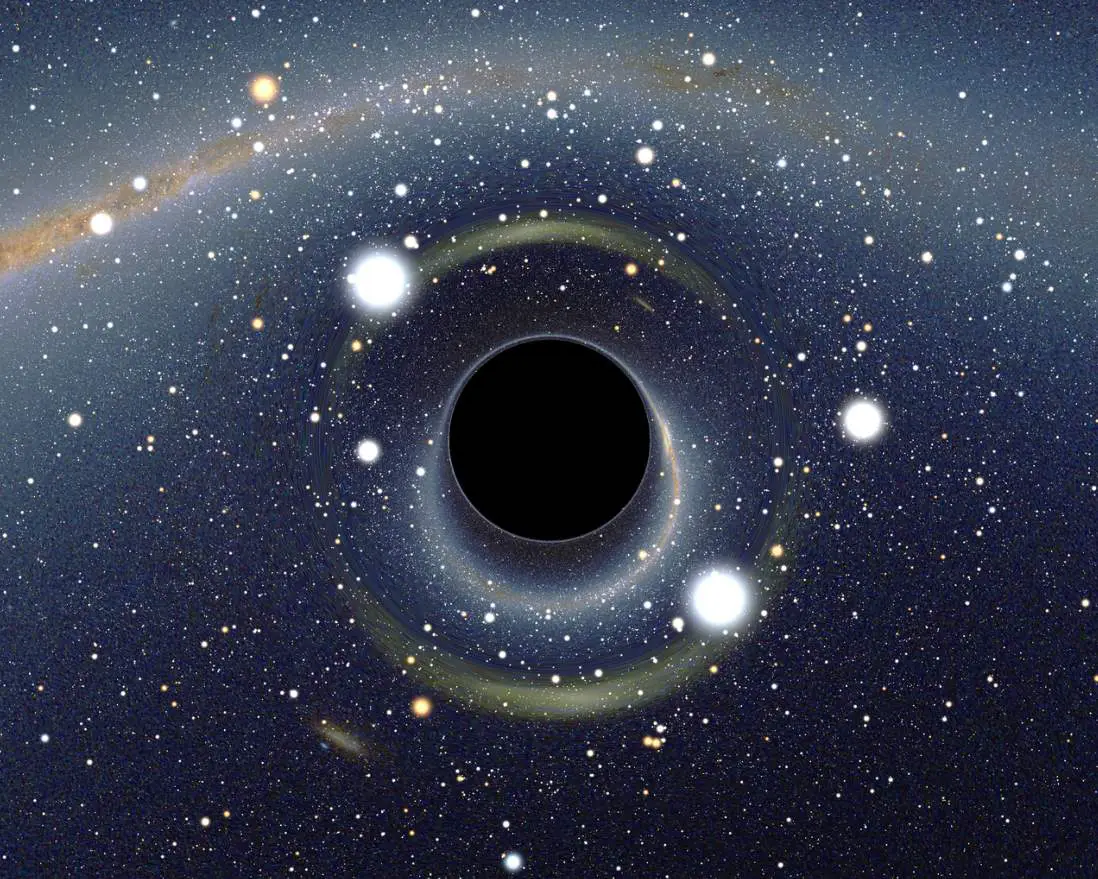
Black holes vary in size. Supermassive ones (100,000 to 10 billion times the mass of the Sun) are located in the centers of most galaxies, including the Milky Way: Astronomers are very confident that the Milky Way galaxy has a supermassive black hole at its center, 26,000 light-years from the Solar System, in a region called Sagittarius A (source). Its estimated mass is 4.1 million M☉ (the mass of the Sun), or about 8.2×1036 kg.
But, there are also smaller ones. There is also evidence for the existence of so-called intermediate-mass black holes, which have lower masses ranging between about 100 and 100,000 times that of the sun. And, the evidence suggests that both of these types of objects may be found away from the center of a galaxy. They were probably born from a collision and merger with another galaxy containing a massive black hole.
Astronomers now think hundreds of “rogue” black holes may dwell in the Milky Way. What, if one of them passes through the solar system?
Remember, even the light can’t escape from a black hole. So, the Earth definitely can’t. If it passes close enough, it can swallow the Earth, and even the complete solar system, including the Sun. There are other possibilities: it can kick us out of the solar system, or spiral us into the sun.
4. The Sun’s death
Timeframe: 2 billion years
The Sun is about 4.5 billion years old. During this time, it used almost half of its fuel (hydrogen – the sun is steadily converting hydrogen into helium through fusion). So, right now, it is midway through life, and about 5 billion years from now, it will begin to die – here’s how:
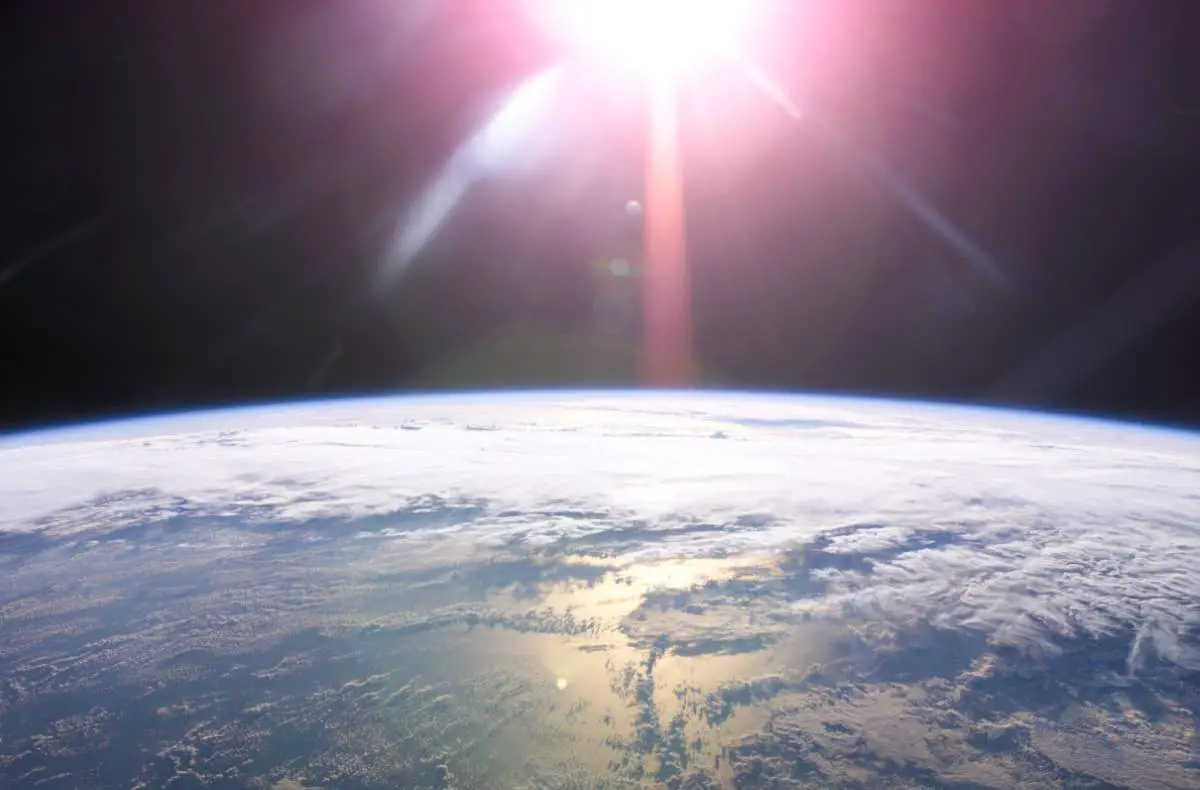
First, the sun will run low on hydrogen – its main fuel. Its core will begin collapsing in on itself and get denser and hotter – until it suddenly starts the second type of nuclear fusion: turning helium atoms into carbon and oxygen. This extra energy will push out the outer layers of the sun.
Once a star starts burning helium, it can be considered a red giant. The sun will spend around a billion years burning helium in its core. During this phase, the core will contract and the outer layers will expand, cool, and become less bright. The sun will expand about 250 times its original size. It will probably swallow the Earth (whether the sun will expand to reach Earth is still a matter of debate among scientists).
Eventually, the helium also will run out, and the core of the Sun will begin to collapse again. But this time, it will never get hot enough to start the next fusion chain. Its outer layers will get “puffed” off into space as a planetary nebula and the sun itself will become a white dwarf.
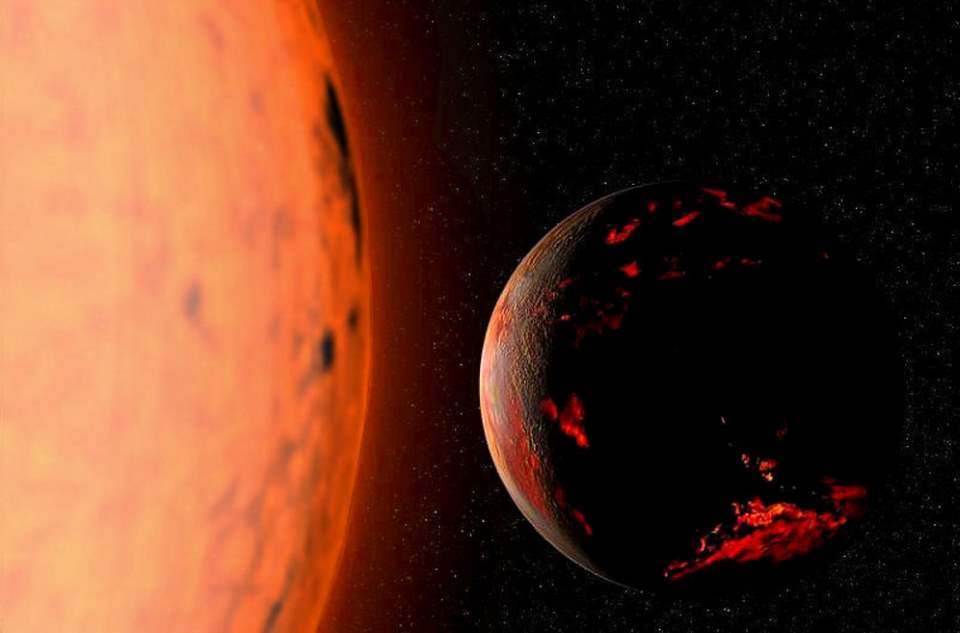
Even if the Sun won’t “swallow” Earth, its evolutionary cycle (becoming a red giant, then a white dwarf) could perturb the orbits of planets in the solar system, increasing the chance that they would collide with each other and ultimately disintegrate and fall into the Sun. And, we have seen this scenario at a distant star: in 2015, using the Kepler space telescope, astronomers made the first direct discovery of a white dwarf star being orbited by a disintegrating minor planet that will ultimately collide with it.
But, the Sun will destroy life on Earth much sooner becoming a red giant: it will happen as soon as the solar luminosity becomes 10% higher than its current value.
During the next four billion years, the luminosity of the Sun will steadily increase. This will result in a rise in solar radiation reaching the Earth. Even a 10% increase, which might not seem a lot, will cause more water to evaporate into the atmosphere. This extra vapor will create a greenhouse effect. As the Earth gets hotter, more water will evaporate – a deadly circle.
The sun will shine almost 40% brighter around 3.5 billion years from now. It will boil Earth’s oceans and strip all of the moisture from its atmosphere. The Earth will become a Venus-like planet that is unbearably hot and dry. The life on it will completely be wiped out.
5. A close supernova
Timeframe: unknown
What if an approaching rogue star becomes a supernova (see notes 2)? It would cause real harm to Earth by sending gamma rays into the inner solar system. The nearer the supernova, the bigger the threat is.
But, since the chances of a rogue star coming really close to Earth are slim, the chances of that star becoming a supernova is even slimmer.
6. A Gamma-ray burst
Timeframe: 500,000 years, maybe?
Gamma-ray bursts (GRBs) are extremely energetic explosions that have been observed in distant galaxies. They are the most powerful events known to occur in the universe. They observed from Earth despite their typically immense distances – billions of light-years.
Evidence from recent satellites like Swift and Fermi indicates that the energy behind a gamma-ray burst comes from the collapse of matter into a black hole. Other possible sources are merging two black holes, a rapidly rotating supernova or hypernova, a quark star (see notes 3), or star collision.
Gamma-ray bursts are extremely dangerous events. A GRB within a few parsecs, with its energy directed towards Earth, will mostly damage life by raising the UV levels; during the burst itself and for a few years thereafter. The major Ordovician–Silurian extinction events 450 million years ago (the second or third largest of the five major extinction events in Earth’s history in terms of the percentage of genera that became extinct) may have been caused by a GRB.
But, fortunately for us, we live in the “boring” suburbs of the Milky Way. In fact, there’s a nearby binary star called WR 104, which is located about 7,500 light-years from Earth. The primary star of that binary system is predicted to probably become a core-collapse supernova with a small chance of producing a long-duration gamma-ray burst. But even if it does, it might well miss the Earth. So, the chances of a gamma-ray burst directed toward Earth are very, very slim for a long time.
In the video below, you can watch a supercomputer simulation of two neutron stars colliding, merging, and forming a black hole. Events such as this are believed to be the source of short gamma-ray bursts. (Credit: NASA/AEI/ZIB/M. Koppitz and L. Rezzolla)
7. The molten core of Earth might cool
Timeframe: 3-4 billion years
Earth is surrounded by a protective magnetic shield, called the magnetosphere – which protects the planet (and the life on it) from solar winds and high-energy particles by redirecting this energy around the planet. It does not only protect Earth from dangerous particles: some researchers think that Earth’s magnetic field deflects ionizing particles from the sun, which would otherwise wear away Earth’s atmosphere. So, if they are right, without a magnetic field, our planet would lose its atmosphere too, and all the life on it would die.
This magnetic field is generated by Earth’s rotation. In fact, Earth’s core works as a giant electric dynamo: the Earth’s rotation swirls a thick shell of liquid iron and nickel (the outer core) around a solid ball of metal (the inner core).
The good news for us is that the magnetic field here on Earth shows no sign of ceasing anytime soon. The dynamo in the core may do things like flip and reverse, swapping north-and-south magnetic poles, but we should continue to stay protected from the solar wind far into the foreseeable future – for at least a few billion years.
If the core cools, though, and it certainly will in 3-4 billion years, the outer core becomes as solid as the inner core, and the giant dynamo currently powering the Earth’s magnetosphere stops. With the “collapse” of the magnetosphere, we’d lose our protection from solar winds, which would slowly blast our atmosphere into space.
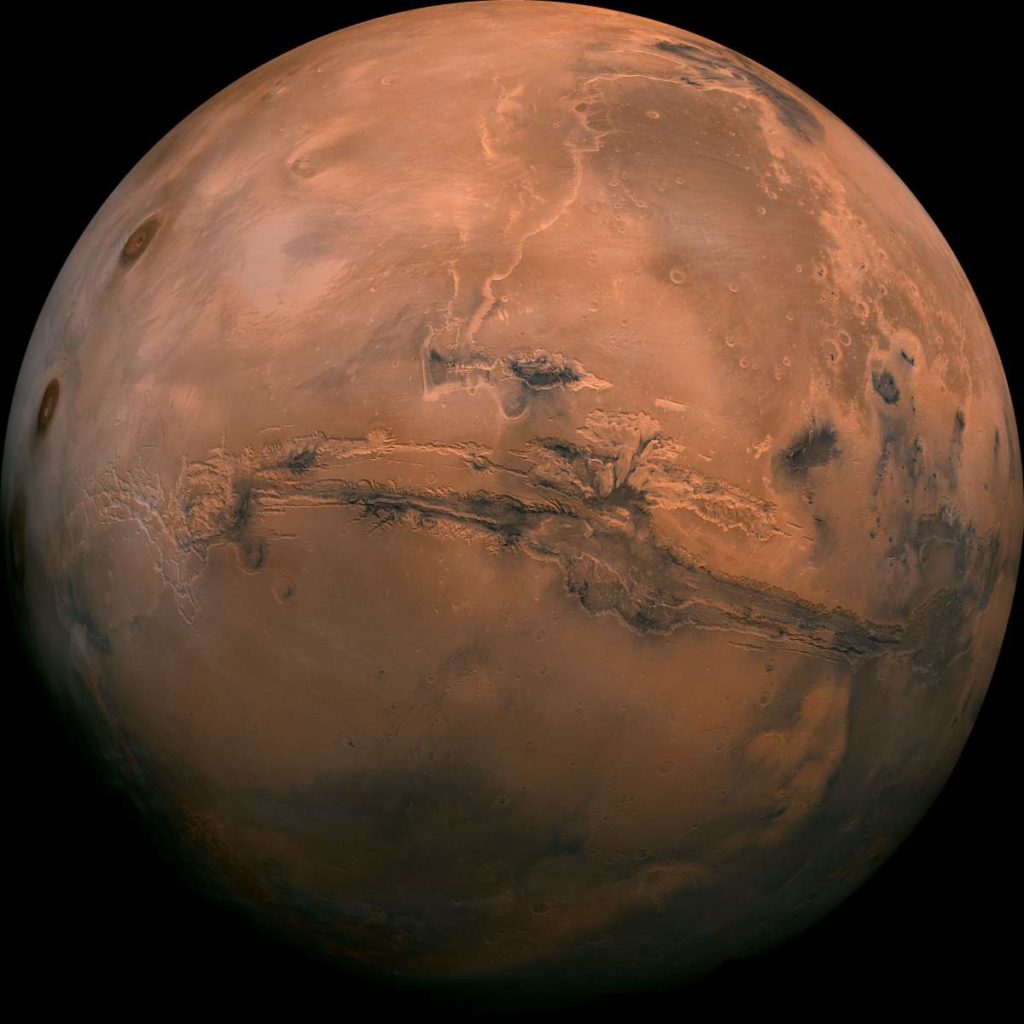
Something like this may have happened on Mars, which may once have been more hospitable to life than it is now. Scientists think the magnetosphere of Mars collapsed around 3.7 billion years ago, and it lost its atmosphere. Now, Mars has a very thin atmosphere: the atmospheric pressure on the Martian surface averages 600 pascals (0.087 psi; 6.0 mbar), about only 0.6% of Earth’s mean sea level pressure of 101.3 kilopascals (14.69 psi; 1.013 bar).
On March 1, 2017, at the Planetary Science Vision 2050 Workshop, Dr. Jim Green (the Director of NASA’s Planetary Science Division) and a panel of researchers presented an ambitious idea: to restore its atmosphere, they suggested that by positioning a magnetic dipole shield at the Mars L1 Lagrange Point, an artificial magnetosphere could be formed that would encompass the entire planet, thus shielding it from solar wind and radiation.
8. A collision between the Earth and another planet of the Solar System
Timeframe: 5+ billion years
Even if no rogue star, planet, or black hole approaches Earth in the future, gravitational perturbations between the Solar System’s planets may cause the inner Solar System as a whole to behave chaotically over long time periods. Computer simulations suggest that there is a small (less than 1%) chance that a collision could occur between Earth and either Mercury, Venus, or Mars over the next five billion years.
9. The approach of a magnetar
Timeframe: unknown
A magnetar is a type of neutron star believed to have an extremely powerful magnetic field.
Like other neutron stars, magnetars are around 20 km (12 mi) in diameter and have a mass of 2-3 times that of the Sun. The density of the interior of a magnetar is such that a tablespoon of its substance would have a mass of over 100 million tons. Magnetars are differentiated from other neutron stars by having even stronger magnetic fields, and by rotating comparatively quicker.
We use a unit called Gauss to measure the strength of a magnetic field. Earth’s magnetic field is only about 0.6 gauss. A refrigerator magnet is 10 Gauss. The most powerful magnet on Earth right now is about 410,000 Gauss.
A magnetic field of a magnetar can be as strong as one quadrillion gauss. That’s one with 15 zeros behind it.
If a magnetar gets too close to the Earth, you’d start to feel its presence when it is about halfway between the Moon and the Earth. At that distance, a magnetar would erase the information off all of your credit cards’ magnetic strips.
If it gets any closer than 1,000 km (620 mi), Earth’s (and your body’s) atoms would get stretched out of shape. Your bioelectric field would get scrambled, disintegrating your molecular structure. And your body would just disappear.
Alternatively, a magnetar could destroy us from much, much further away. As if being the biggest spinning magnets in the Universe isn’t enough, magnetars can also be affected by something called starquakes.
Starquakes happen when a star’s crust cracks, letting massive amounts of radiation out into space. This blast of radiation could compress the Earth’s magnetic field and partially ionize Earth’s atmosphere even from 50,000 light-years away!
We know this because we have already come a little too close on at least one occasion. In 2004, gamma radiation from a magnetar reached our planet from outside of our Milky Way galaxy. In just one-fifth of a second, it released more energy than our Sun has released over the last 250,000 years.
Move that magnetar and its starquake up to 10 thousand light-years away, and things would get much worse. First, it would destroy our ozone layer. Then, it would wipe clean most of the planet’s surface, along with all life as we know it.
The truly scary part of it is that we wouldn’t even know the magnetar was heading toward us. It would be a “blink and you’re gone” scenario.
Luckily, most magnetars don’t make it much past their 10,000 birthday. Their short lifespan ends with them becoming neutron stars – still dense and still magnetic, but not nearly as dangerous as a magnetar.
10. Bombardment of huge asteroids
Timeframe: around 450 million years
Big rocks like the famous “dinosaur killer” Chicxulub asteroid may strike Earth once about every 500 million years. The last such impact was 66 million years ago. But none of these huge asteroids wiped out life on Earth completely. They are still dangerous, though. Such an impact can kill many billions of living individuals (including humans) and bring human civilization to an end. But, in that timeframe, either humanity will go extinct or will be advanced enough not to care about that.
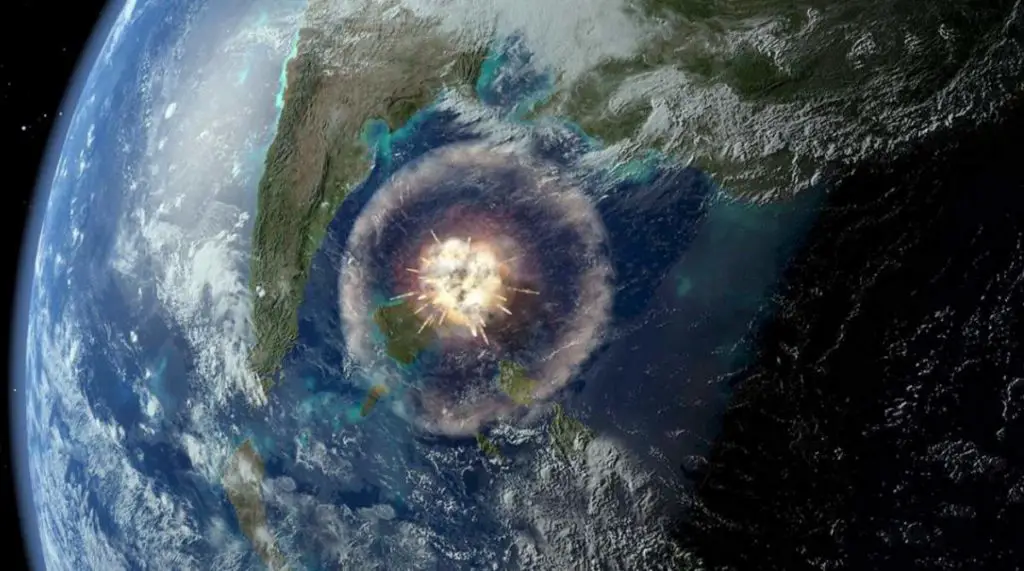
11. Volcanic apocalypse
Timeframe: 100 million years (if it ever happens)
One of the suggested mechanisms for the Permian-Triassic (P-Tr) extinction event (colloquially known as the Great Dying, the End Permian, or the Great Permian Extinction) occurred about 252 Ma (million years) ago is massive volcanism.
It was the biggest extinction event in Earth’s history: the recovery of life on Earth took significantly longer than after any other extinction event, possibly up to 10 million years. 90% to 96% of all species were gone. Up to 96% of all marine species and 70% of terrestrial vertebrate species became extinct. It is also the only known mass extinction of insects: some 57% of all families and 83% of all genera became extinct.
Similar-sized eruptions happened 200, 180, and 65 million years ago, so they’re not regular. But one will surely happen eventually, though nobody knows exactly when.
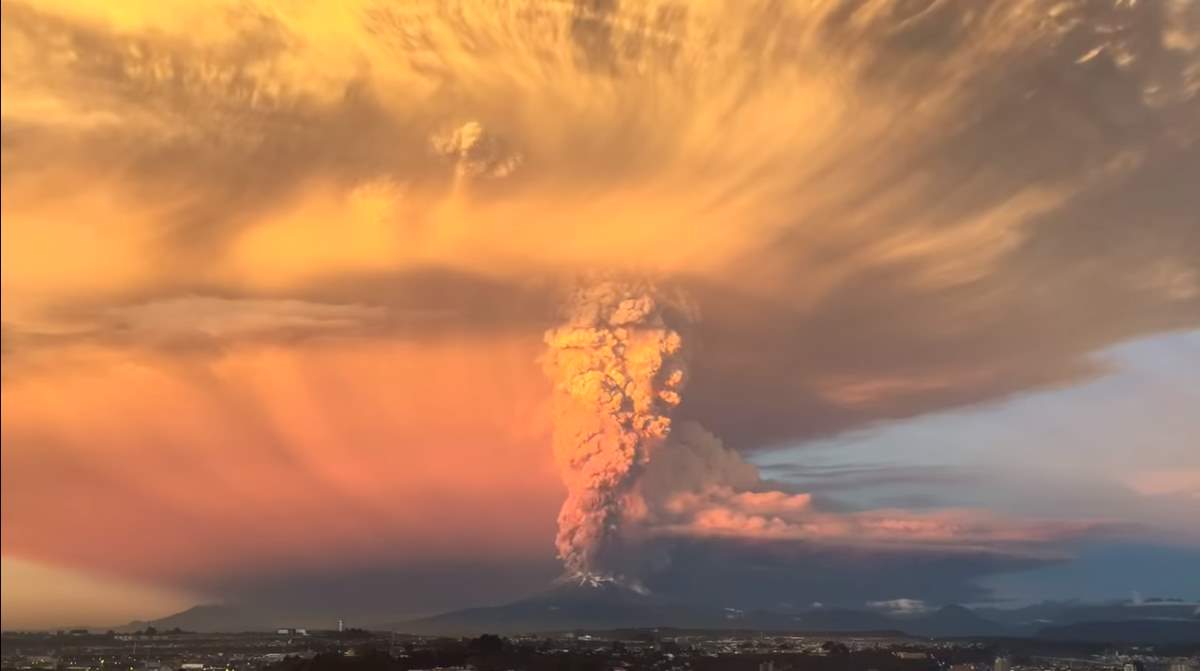
A huge volcanic activity can kill an enormous quantity of animals and plants, but what causes a mass extinction is its afterward effects: it may release vast quantities of ozone-destroying chemicals into the atmosphere. Then the radiation, which atmospheric ozone normally soaks up, does the real harm.
12. Changes in the Earth’s Obliquity
Timeframe: 1.5 – 4.5 billion years
The tidal acceleration of the Moon slows the rotation rate of the Earth and increases the Earth-Moon distance. Friction effects -between the core and mantle and between the atmosphere and surface- can dissipate the Earth’s rotational energy. These combined effects are expected to increase the length of the day by more than 1.5 hours over the next 250 million years and to increase the obliquity by about a half degree. The distance to the Moon will increase by about 1.5 Earth radii during the same period.
Based on computer models, the presence of the Moon appears to stabilize the obliquity of the Earth, which may help the planet to avoid dramatic climate changes. This stability is achieved because the Moon increases the precession rate of the Earth’s spin axis (that is, the precession motion of the ecliptic), thereby avoiding resonances between the precession of the spin and precession of the planet’s orbital plane relative to that of Jupiter.
However, as the semimajor axis of the Moon’s orbit continues to increase, this stabilizing effect will diminish. At some point, perturbation effects will probably cause chaotic variations in the obliquity of the Earth, and the axial tilt may change by angles as high as 90° from the plane of the orbit.
A high obliquity would probably result in dramatic changes in the climate and may destroy the planet’s habitability. When the axial tilt of the Earth exceeds 54°, the yearly insolation at the equator is less than that at the poles. The planet could remain at an obliquity of 60° to 90° for periods as long as 10 million years.
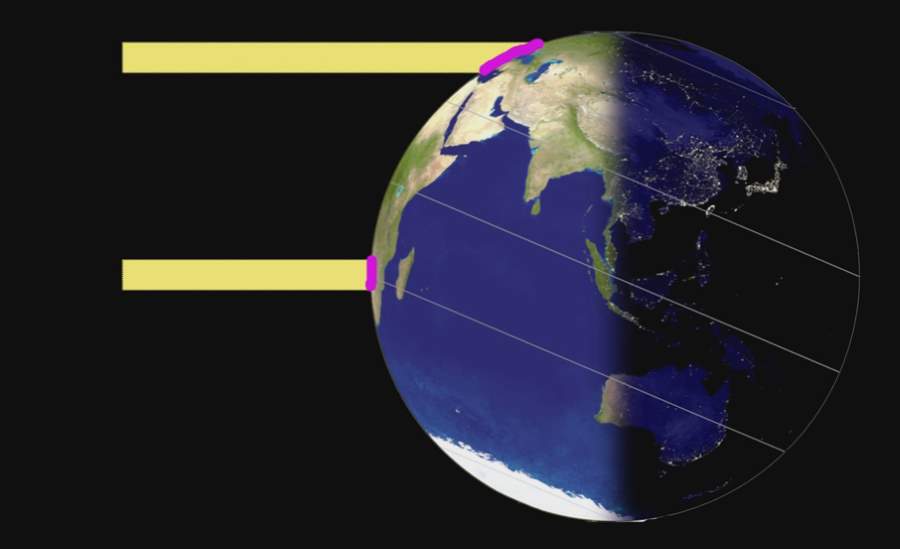
How Earth could die: Other threats
- Environmental threats. For example, today, one of the most pressing environmental challenges that we are faced with is marine plastic debris. It can kill our oceans and that would probably mean the end of life on planet Earth. SLO Active recently published a very detailed and informative guide, titled “Plastic Pollution: Single-Use Plastic Impact on our Oceans“, covering this very subject. A few quick numbers show how big the problem is: Every year, 10-20 million tons of plastic end up in our oceans. Around 5.25 trillion plastic particles currently floating around in the world’s oceans. Estimated losses per year associated with marine plastic debris due to the negative impact on marine ecosystems are $13 billion.
- Climate change
- Global pandemic
- Human activities like warfare and mass destruction, or an experimental technology accident
- Intelligent extraterrestrial life could invade Earth, either to exterminate and supplant human life or destroy the planet altogether.
Notes
- The Oort cloud sometimes called the Öpik-Oort cloud is a theoretical cloud of predominantly icy planetesimals believed to surround the Sun to as far as somewhere between 50,000 and 200,000 AU (0.8 and 3.2 light-years). It is named after astronomer Jan Oort, who first theorized its existence. 1 AU (Astronomical Unit) is the distance between Earth and the Sun, which is now defined as exactly 149,597,870,700 meters (about 150 million kilometers, or 93 million miles).
- A supernova is an astronomical event that occurs during the last stellar evolutionary stages of a massive star’s life, whose dramatic and catastrophic destruction is marked by one final titanic explosion. This causes the sudden appearance of a “new” bright star, before slowly fading from sight over several weeks or months. Supernovae are more energetic than novae. In Latin, nova means “new”, referring astronomically to what appears to be a temporary new bright star. Adding the prefix “super-” distinguishes supernovae from ordinary novae, which are far less luminous.
- A quark star is a hypothetical type of compact exotic star composed of quark matter, where extremely high temperature and pressure forces nuclear particles to dissolve into a continuous phase consisting of free quarks. These are ultra-dense phases of degenerate matter theorized to form inside neutron stars exceeding a predicted internal pressure needed for quark degeneracy. Quark stars, if they exist, would resemble and be mistaken for neutron stars: they would form in the death of a massive star in a Type II supernova, they would be extremely dense, and possess a very high gravitational field.
Sources
- Giant-impact hypothesis on Wikipedia
- Rogue Planet on Wikipedia
- How many stars in the Milky Way? on asd.gsfc.nasa.gov
- New Evidence for Protoplanet Theia Found in Moon Rocks on sci-news.com
- Scholz’s star on Wikipedia
- How long will life survive on Planet Earth? on BBC.com
- X-ray Telescopes Find Evidence for Wandering Black Hole on NASA.gov
- Astronomers Watch Dead Star Demolish a Planet, Revealing How Earth Could Die on Science Alert
- Gamma-ray burst on Wikipedia
- Supernova on Wikipedia
- Quark star on Wikipedia
- Nasa Proposes A Magnetic Shield To Protect Mars’ Atmosphere on UniverseToday.com
- Future of Earth on Wikipedia
- Permian-Triassic extinction event on Wikipedia
- “Plastic Pollution: The Impact on our oceans and what we can do about it.” on SLO Active webpage.
- Magnetar on Wikipedia
- What If a Magnetar Entered Our Solar System? on insh.world
- Moon Landings: All-Time List [1966-2025] - February 2, 2025
- What Is Max-Q and Why Is It Important During Rocket Launches? - January 16, 2025
- Top 10 Tallest Rockets Ever Launched [2025 Update] - January 16, 2025





One reply on “How Earth Could Die [12 Horrible Ways!]”
[…] it’s estimated that the comets from the Oort cloud would require roughly two million years to get …. We haven’t yet experienced the effects of Scholz’s star flyby, but our antecedents may have to […]